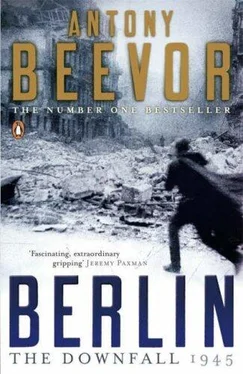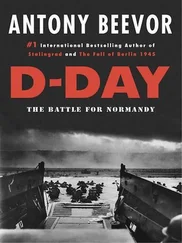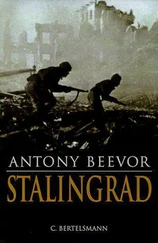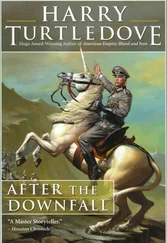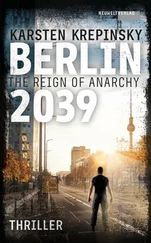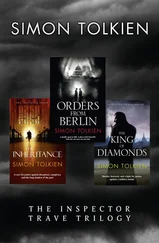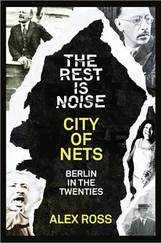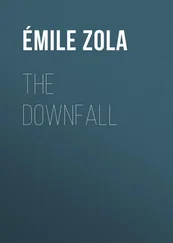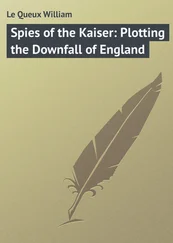Objects taken as plunder were often discarded and trampled a few moments later. Nobody wanted to leave anything for a ‘ shtabnaya krysa’ — a ‘staff rat’ — or especially for a ‘ tylovaya krysa ’ — a ‘rear rat’ from the second echelon. Solzhenitsyn described scenes resembling a ‘tumultuous market’, with soldiers trying on Prussian women’s outsize drawers. Some fitted on so many layers of clothing under their overalls that they could hardly move, and tank crews stuffed so much plunder into their vehicles that it is amazing the turret could still traverse. The supply of artillery shells was also reduced because so many vehicles were loaded with indiscriminate loot. Officers shook their heads in despair at their men’s choice of booty, such as dinner jackets, to send home in the monthly parcel. The idealistic Kopelev disapproved strongly. He regarded the specially permitted five-kilo parcel as a ‘direct and unmistakable incitement to plunder’. Officers were allowed twice as much. For generals and SMERSH officers there was scarcely a limit, but generals did not really need to stoop to looting. Their officers brought select offerings. Even Kopelev chose an elaborate hunting rifle and a set of Dürer engravings for General Okorokov, his boss in the 2nd Belo-russian Front political department.
A small group of pro-Soviet German officers was taken to visit East Prussia. They were appalled by what they saw. One of them, Count von Einsiedel, vice-president of the NKVD-controlled National Committee for a Free Germany, told fellow members on his return, ‘Russians are absolutely crazy about vodka and all alcoholic drinks. They rape women, drink themselves into unconsciousness and set houses on fire.’ This was rapidly reported to Beria. Ilya Ehrenburg, the fieriest of all propagandists, was also deeply shaken on a visit, but it did not make him moderate his ferocity in print.
Red Army soldiers had never been well fed during the war. Most of the time they had been permanently hungry. If it had not been for the huge shipments of American Spam and wheat, many of them would have been close to starvation. They had inevitably resorted to living off the land, although it was never an official policy in the Red Army as it had been with the Wehrmacht. In Poland, they had stolen the seed corn of farmers and slaughtered for meat the few remaining animals missed by the Germans. In Lithuania the desperate urge for sugar had led to soldiers raiding beehives: in their ranks the previous autumn, many were conspicuous with faces and hands dramatically swollen by bee stings. But the well-ordered and well-stocked farms of East Prussia offered a bounty beyond their dreams. Cows mooing in agony from swollen udders because those who milked them had fled were frequently shot down with rifles and machine guns to be turned into improvised steaks. ‘They ran away and left everything behind,’ wrote one soldier, ‘and now we have lots of pork, food and sugar. We have so much food now that we won’t eat just anything.’
Although the Soviet authorities were well aware of the terrible retribution being exacted in East Prussia, they seemed angered, in fact almost offended, to find that German civilians were fleeing. Countryside and towns were virtually depopulated. The NKVD chief of the 2nd Belorussian Front reported to G. F. Aleksandrov, the chief ideologist on the central committee, that there were ‘very few Germans left… many settlements are completely abandoned’. He gave examples of villages where half a dozen people remained and small towns with fifteen people or so, almost all over forty-five years of age. The ‘noble fury’ was triggering the largest panic migration in history. Between 12 January and mid-February 1945, almost 8.5 million Germans fled their homes in the eastern provinces of the Reich.
In East Prussia, a number went to hide in the forests, especially Volkssturm men and vulnerable women, praying for the fury to pass. The vast majority, on the other hand, had started to flee just ahead of the invasion. Some left messages for their menfolk. ‘Dear Papa!’ Dmitri Shcheglov found hurriedly chalked in a childish hand on one door. ‘We must escape to Alt-P. by cart. From there on to the Reich by ship.’ Hardly any were to see their homes again. It was the abrupt and total destruction of a whole region, with its own marked character and culture, emphasized perhaps because it had always been at the extremity of Germany on the Slav frontier. Stalin had already planned to take the northern half with Königsberg as part of the Soviet Union. The rest would be given to a satellite Poland as partial compensation for the annexation of all of its eastern territories as ‘western Belorussia’ and ‘western Ukraine’. East Prussia itself was to be wiped from the map.
Once Rokossovsky’s 5th Guards Tank Army had cut through to the Frisches Haff, the only routes out were by sea from Pillau at the south-west tip of the Samland Peninsula, or over the ice to the Frische Nehrung, the long sandbar enclosing the lagoon from the Danzig end. Perhaps the most unfortunate fugitives were the ones who fled into Königsberg, which was soon cut off on the landward side. Escape from the city proved far from easy, mainly because the Nazi authorities had made no preparations for the evacuation of civilians, and it took some time before the first ships appeared at Pillau. Meanwhile, the siege of the East Prussian capital became one of the most terrible of the war.
The refugees who reached the Frische Nehrung, the sandbar of the lagoon, the only route still open to the west, received little pity from Wehrmacht officers. They forced them off the road, insisting that it was for military use only. Trekkers had to abandon their carts and belongings and stagger through the dunes. Many never even reached the Frische Nehrung. On the mainland, Soviet tank columns simply crushed any refugee farm carts in the way and raked convoys with machine-gun fire. When a detachment of tank troops overtook a refugee column on 19 January, ‘the passengers on the carts and vehicles were butchered’.
Even though East Prussia contained none of the Nazis’ most notorious concentration camps, an NKVD detachment checking an area of forest near the village of Kumennen found 100 civilian corpses in three groups in the snow. They were presumably victims of a death march. Himmler had ordered the evacuation of camps when the Red Army approached. ‘The majority are women aged 18–35,’ the report stated, ‘and clad in torn clothes with numbers and a six-pointed star on the left sleeve and on the front of their clothes. Some of them wore clogs. Mugs and spoons were fastened to their belts. Their pockets contained food — small potatoes, swede, grains of wheat etc. A special commission of investigation formed by doctors and officers established that they were shot at close range and all the executed women were half-starved.’ Significantly, they were not identified by the Soviet authorities as Jews, despite the mention of six-pointed stars sewn on their clothing, but as ‘citizens of the USSR, France and Romania’. The Nazis killed around 1.5 million Soviet Jews simply because they were Jewish, but Stalin did not want anything to divert attention from the suffering of the Motherland.
4. The Great Winter Offensive
When German generals addressed their men in familiar tones they called them ‘ Kinder’ — children. This came from a Prussian sense of paternalism which extended to the whole state. ‘The soldier is the child of the people,’ said General von Blumentritt at the end of the war, but any idea of a family tie between military and civilian society was by then wishful thinking.
Anger was rising at the futile sacrifices. People were now prepared to shelter deserters. A Polish farmer who had been in Berlin on 24 January witnessed women shouting at the officers and NCOs marching a column of German soldiers through the streets, ‘Let our husbands come home! Make the Golden Pheasants [senior Nazis] fight instead!’ General staff officers in their uniforms with thick red stripes down their trousers started to attract cries of ‘Vampire!’ when spotted by civilians. But this did not mean that revolution was in the air, as in 1918, the year which so obsessed the Nazis. The Swedish military attaché observed that there would be no revolt before the food ran out. This was acknowledged in a popular Berlin saying, ‘The fighting will not stop until Göring fits into Goebbels’s trousers.’
Читать дальше
